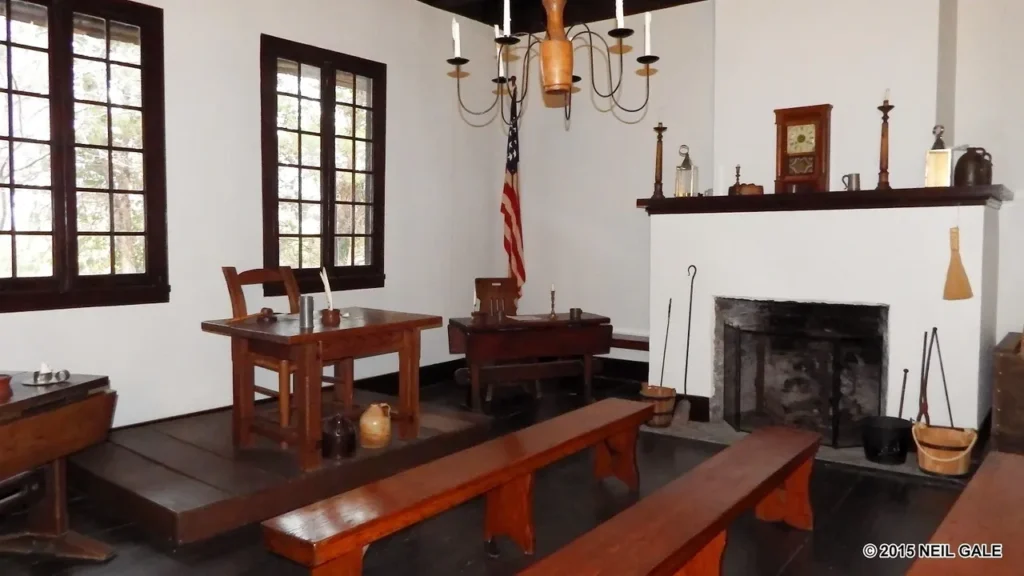
The Old Cahokia Courthouse
The Cahokia Courthouse is located in the village of Cahokia, which is in St. Clair County, Illinois. The structure was built as a residence around 1740, when present-day Illinois was a colony of France. In 1793 the structure was purchased by the Common Pleas Court of the United States Northwest Territory and subsequently became a center of territorial political and legal activity. The building is historically significant as the oldest courthouse in Illinois and the only one remaining from the state’s territorial period (1787-1818). It is architecturally significant as an example of the French Colonial vertical log poteaux-sur-solle (“post-on-sill”) construction technique. This building style with the building’s posts grounded in a foundation sill helped to retard wood rot.
The building traces its ancestry back to a French-Canadian log cabin built by settlers about 1740. In line with this group’s customary architecture, the unknown builder built the cabin with logs raised vertically. This was different from having the logs placed horizontally, as had become the custom among English-speaking frontiersmen farther east.
The vertical-log Courthouse has a double-pitch roof of cedar shingles and galleries on all four sides. Interior features include two massive limestone fireplaces, shuttered casement windows, and French-style doors.
Following the explorations of Marquette, Jolliet and La Salle in the 1670s, the Mississippi Valley became part of New France. The adventurous French had mapped more territory than their numbers could settle, but their attention soon focused on a section of the valley south of the mouth of the Missouri River. In this region, which would later be known as the American Bottom. The alluvial soil was exceptionally fertile, and the local Native Americans, members of the Illiniwek nation or Illinois Confederacy, were friendly to the newcomers.
In the early 18th century, French-speaking immigrants, mostly from Canada, settled villages in the American Bottom such as Kaskaskia, Prairie du Rocher, and Cahokia. They lived in harmony with the Indians and named several of their villages, such as Cahokia, after constituent tribes of the Illiniwek who lived nearby.
The Courthouse was moved to St. Louis for the 1904 World’s Fair, and in 1906 to Chicago’s Jackson Park. Each move resulted in losses of original building fabric. Cahokia residents began in the late 1920s to lobby for return of the historic courthouse, leading the state to purchase the building and the land on which it was originally located. The remaining original fabric was returned to Cahokia and incorporated into the building that was constructed on the courthouse foundation. Cahokia Courthouse in 1972 was placed on the National Register of Historic Places.
The reconstructed Cahokia Courthouse is a historic site of the state of Illinois and is one of the oldest in the United States. Since 1985, it has been under the jurisdiction of the Illinois Historic Preservation Agency (IHPA). Exhibits focus on the issues dealt with by the court around 1800, and the history of the structure’s physical movements. Inside are three exhibit rooms and another furnished to represent the courtroom in the 1790s. Exhibits in the Courthouse depict issues that came before the court around 1800 and a history of the structure as it was moved in the early twentieth century to St. Louis and Chicago before its eventual return to Cahokia.

Blaine K. Price, Historian
Family Tree Nuts 2021
